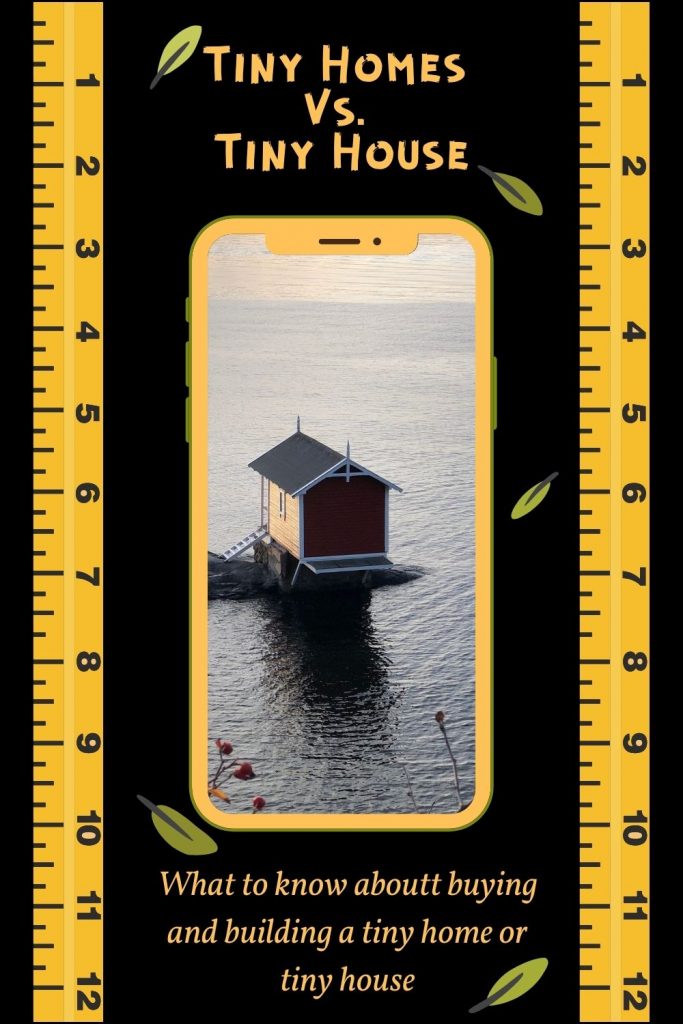Tiny home, or tiny house, it means the same thing, doesn’t it? In some cases, these can be two very different things when it comes to approval and placement of your tiny structure. The term you use to classify your tiny dwelling will make a huge difference when it comes to regulations, especially where L & I safety approval is concerned, read on to find out how and why.
Small Dwellings
Small dwellings including park model RVs, recreational vehicles, and HUD manufactured homes are not tiny houses, or tiny houses with wheels as defined. Many times people will call all of these types of dwellings tiny homes and this can instantly create confusion and frustration during the approval and placement or use process of a tiny dwelling when the Department of Labor and Industry is concerned. In some states, tiny houses and tiny houses on wheels need to meet the state building code requirements as defined in RCW 19.27.031 which is based on ESSB S383-2019. Any tiny dwelling that falls under L & I authority is regulated to be a factory assembled structure. Any factory build housing in many states has been classified or called by the name modular housing or modular home.
Related: New Construction Buyer Mistakes to Avoid
In addition to L & I inspection and requirements, or labels, there are additional labels for tiny dwellings put in place by local towns cities and counties for which you plan to put your tiny structure in. All tiny living units must also meet the requirements of the local jurisdiction in which you plan to live in your tiny dwelling including RVs, modular buildings, manufactured homes, tiny homes, and tiny houses. It is always best to start with your local building department when you begin your tiny home building process no matter what type of dwelling you plan to live in as L & I will only approve construction of tiny dwellings themselves and not how they are used in their location.
How to get your house approved by the department of labor and industries:
First you will need to determine if the tiny structure can be approved by the Department of Labor and Industries. Tiny structures not approved by L & I include:
- A home that is going to be used to live in full time
- Your home is being built on a site where it will be used
- A home is converted from a structure used for something else such as a shipping container, shed, or open framed building and the conversion will take place on the site where the tiny home will be lived in
- The home is already a HUD approved manufactured home
A tiny structure can be approved by the Department of Labor and Industries as a tiny house/tiny house with wheels under factory built housing rules if:
- It truly is a factory built house or modular home and will be designed as a dwelling unit this is the only type of structure approved by Labor and Industries to be used as a dwelling unit
- The home will be constructed somewhere other than the site where it will be used
- Meets all state building code requirements
- The home is no larger than 400 ft.²
Tiny dwellings can be approved by Labor and Industries as a park model RV if it meets the following requirements:
- The main purpose of the unit is to provide temporary housing for recreational purposes or seasonal use
- The tiny unit is built on a single chassis that is mounted on wheels that can be easily moved, they must be able to be transportable on the road within the Washington State Patrol and Department of Transportation guidelines
- The tiny dwelling is no larger than 400 ft.² once completely set up
Second you will need to submit plans showing how you will build a tiny home no matter what type and the department will review all plans to determine if they meet applicable codes and standards. They will make sure that your tiny dwelling meets the parameters for the specific type of tiny dwelling you are seeking approval for. Of course, approval will be much easier when the home is labeled correctly using the term RV, park model recreational vehicle, or factory built housing, or tiny house.
Third you will need the structure or unit inspected in person once plans have been approved instructions will be provided on how to schedule these inspections. There will be a charge for the time and mileage to perform each inspection.
Each state and jurisdiction is different so it’s important to talk to your local building code and L & I Department before launching into the prospect of a tiny home or tiny house.

